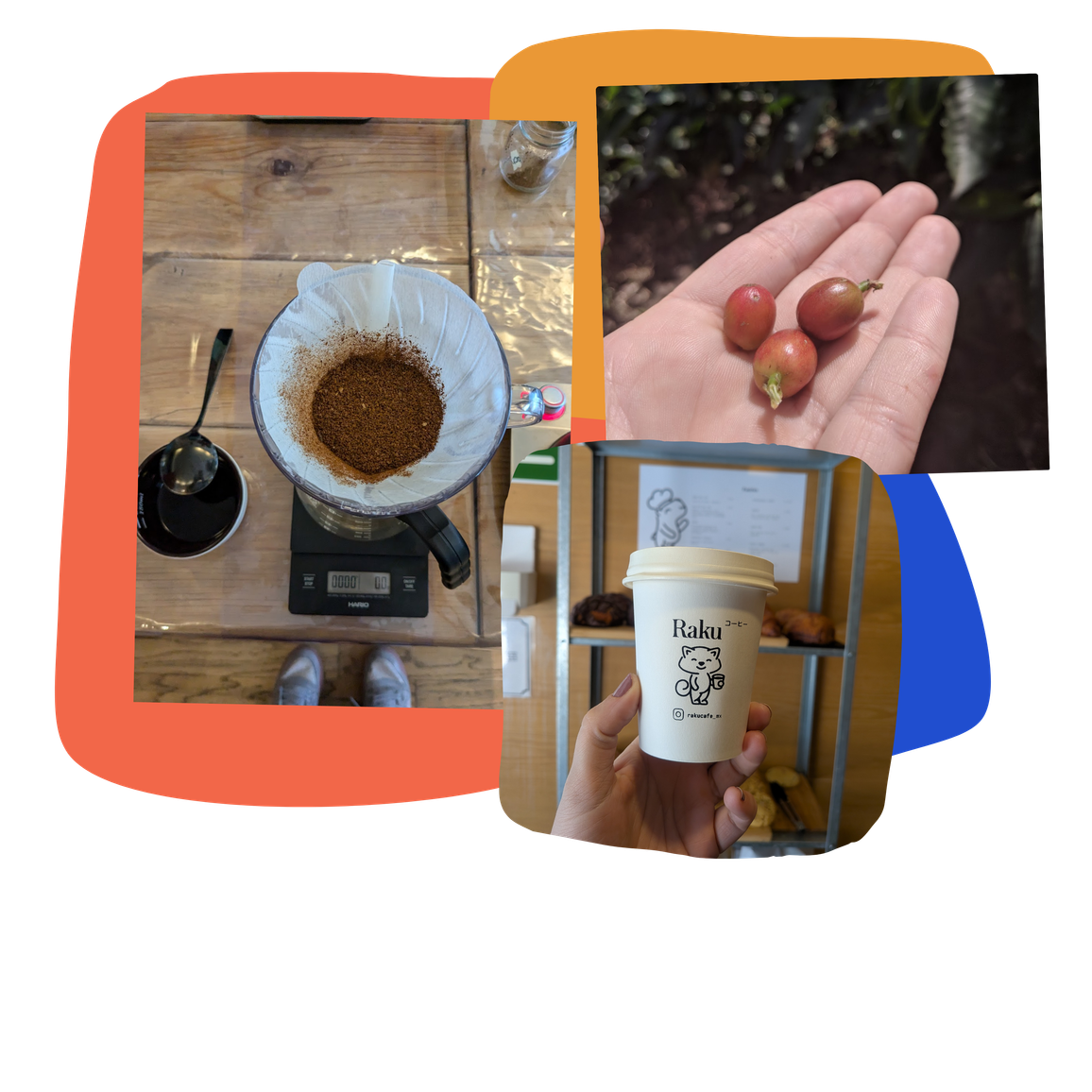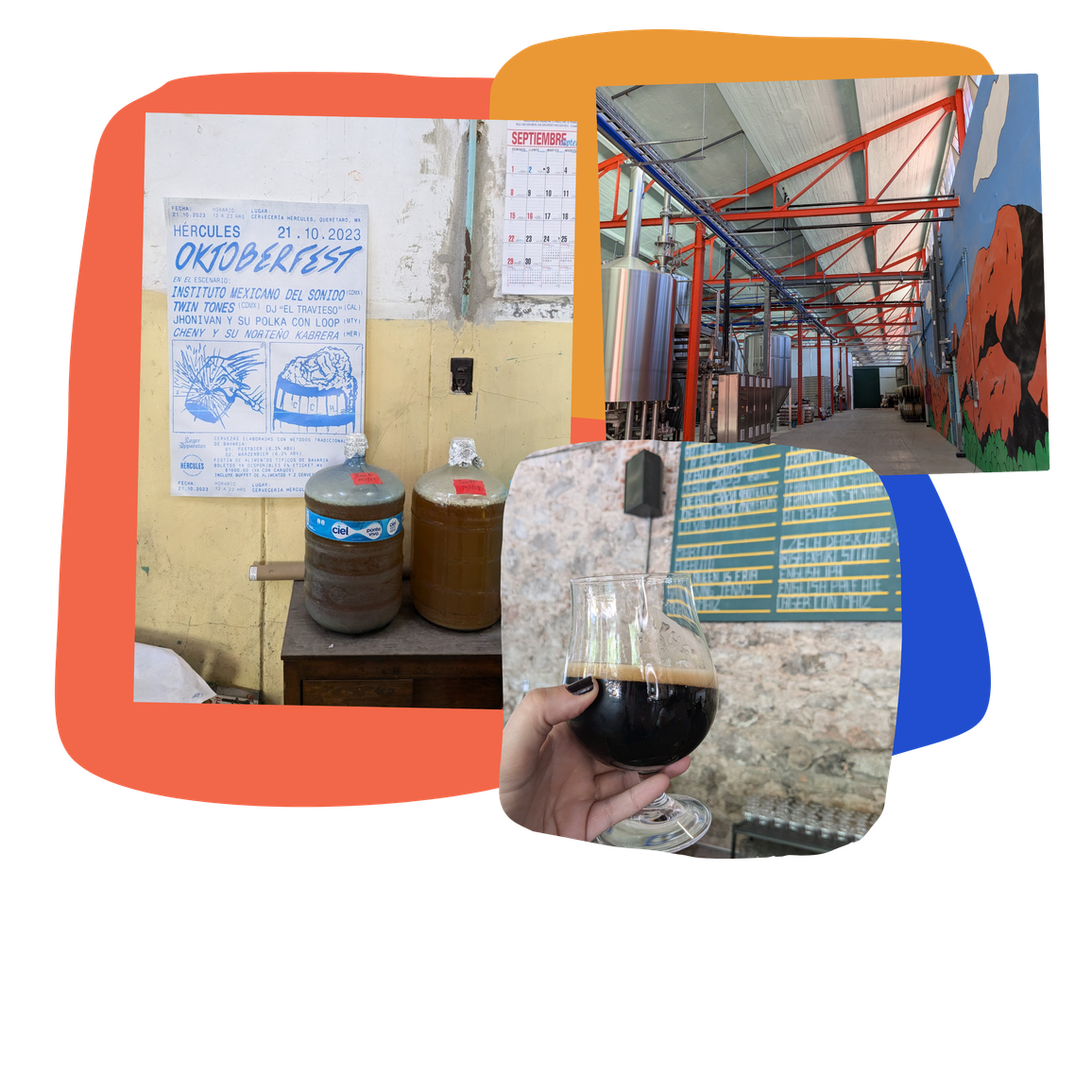Mexican Whiskey
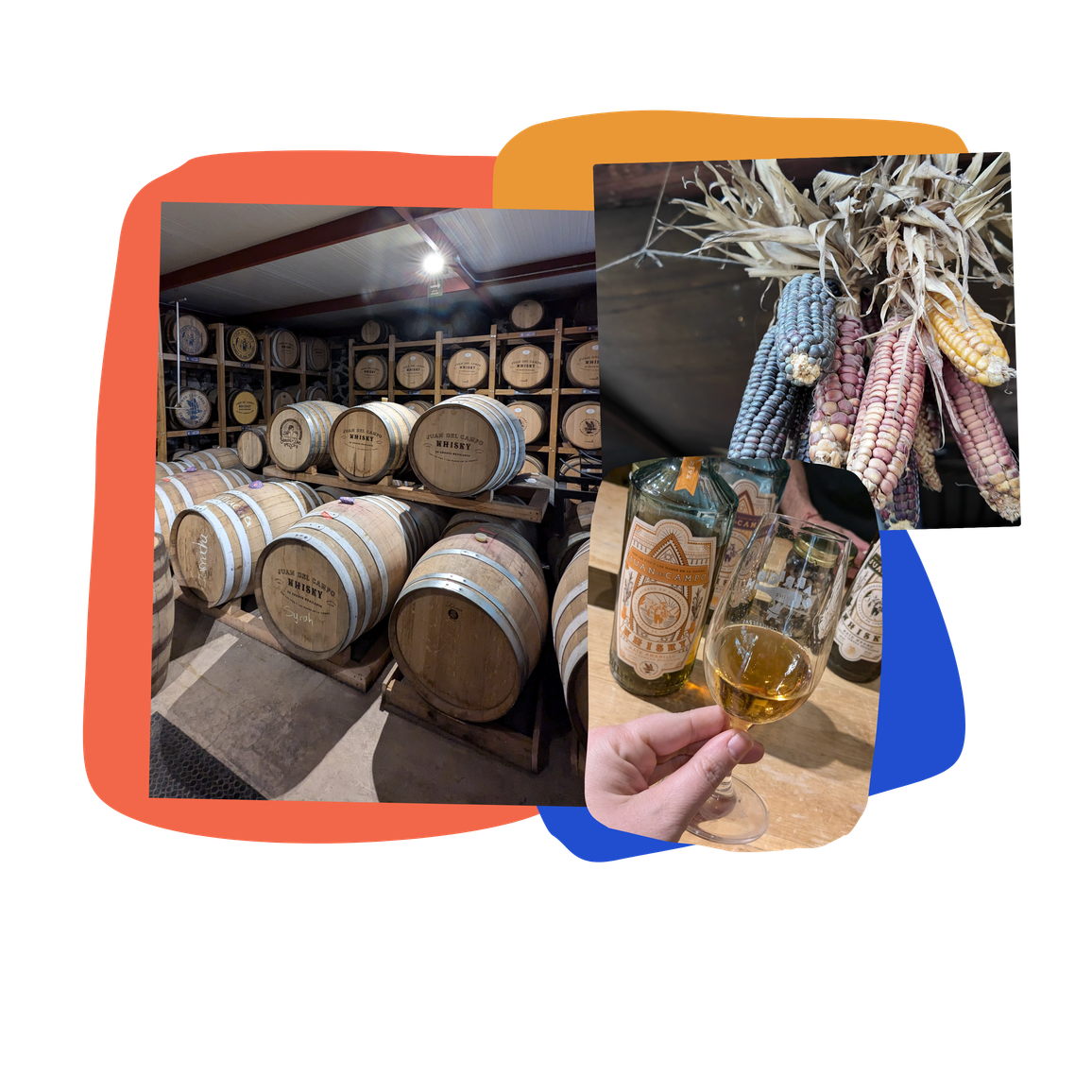
Mexican Whiskey
Mexico is the birthplace of corn and home to +60 varieties, some of which are being used to make whiskey that is packed with flavor.
Listen to this episode to hear all about:
- How Mexico is the birthplace of corn (and so the perfect place to make corn whiskey!)
- Why native corn is going extinct—even though it's packed with flavor and more nutrients than the kind we normally eat
- What makes Mexican whiskey stand out compared to brands from more established countries like Scotland and the US
- The brands you need to track down stat!
Subscribe
Subscribe to the show in your favorite podcast player to make sure you never miss an episode!
And maybe leave a rating and review while you're there? 🙏
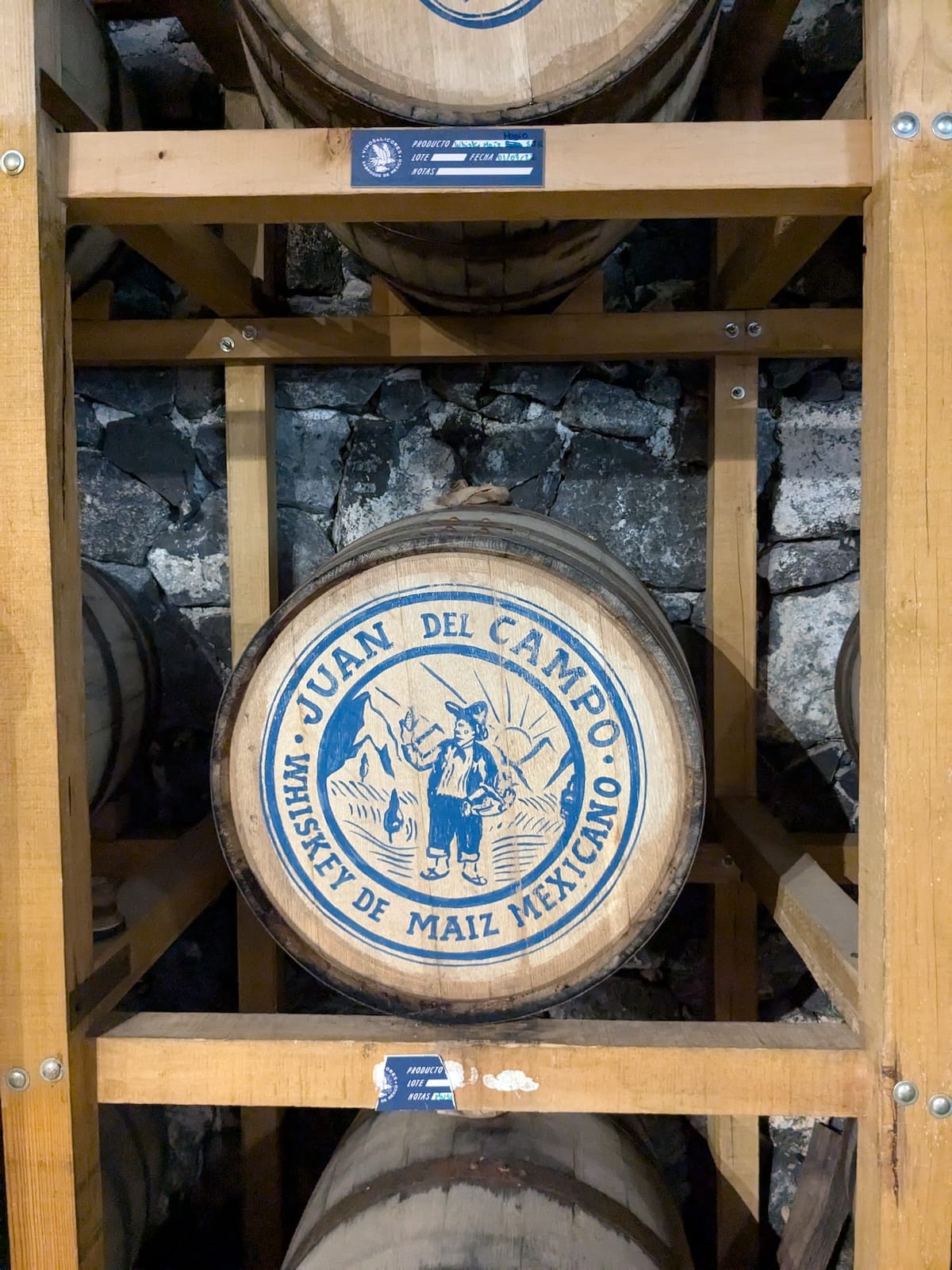
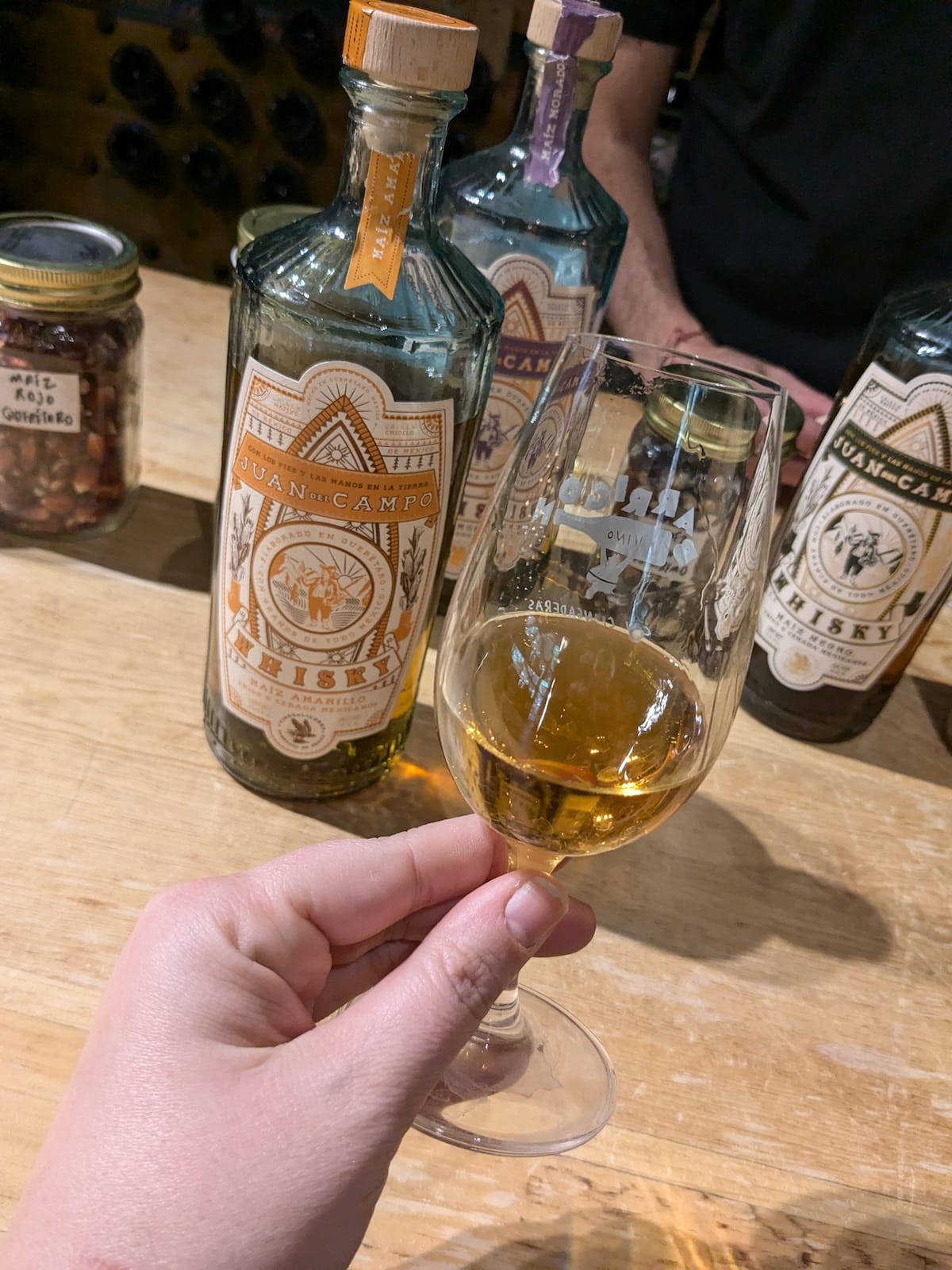
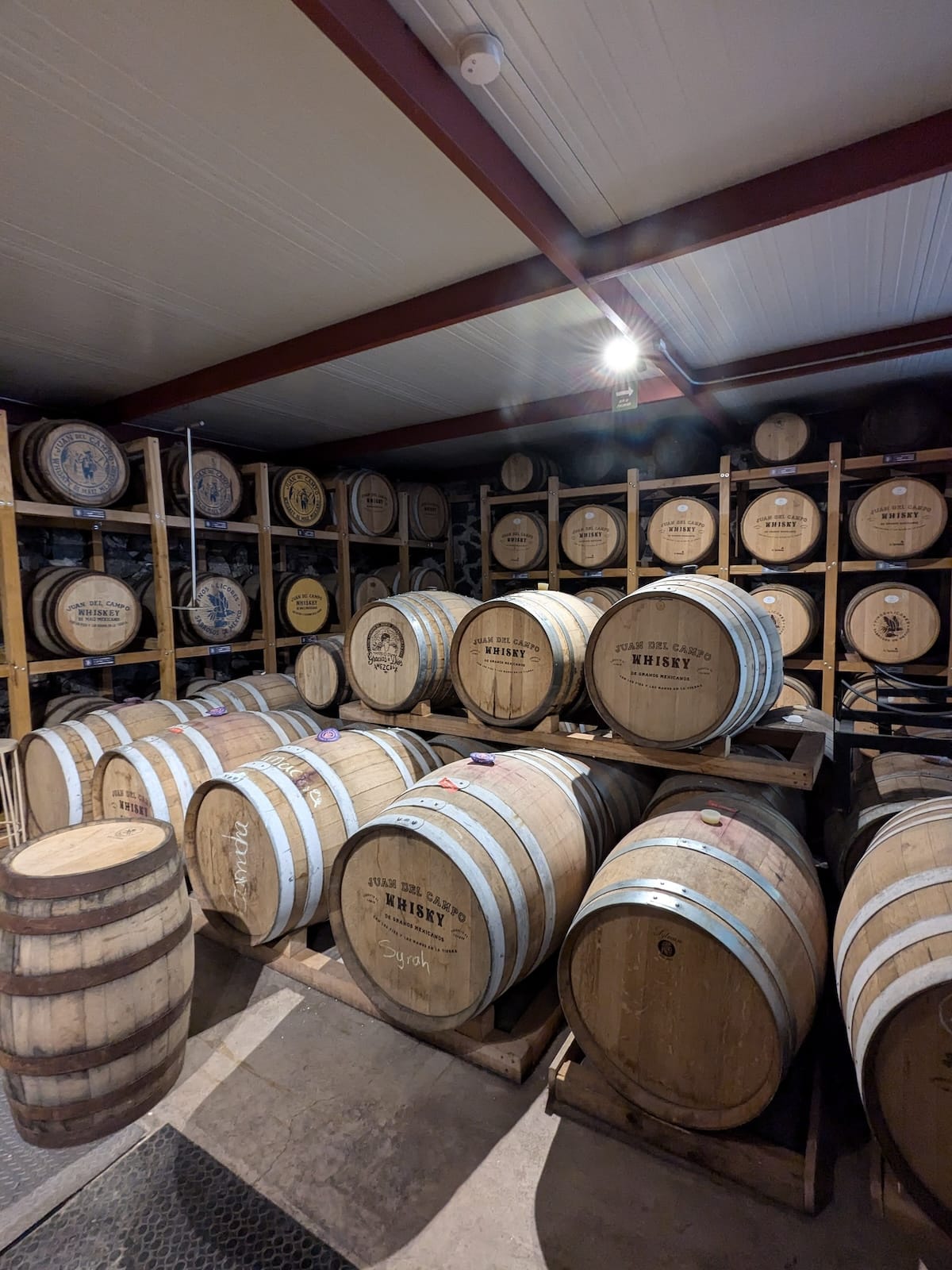
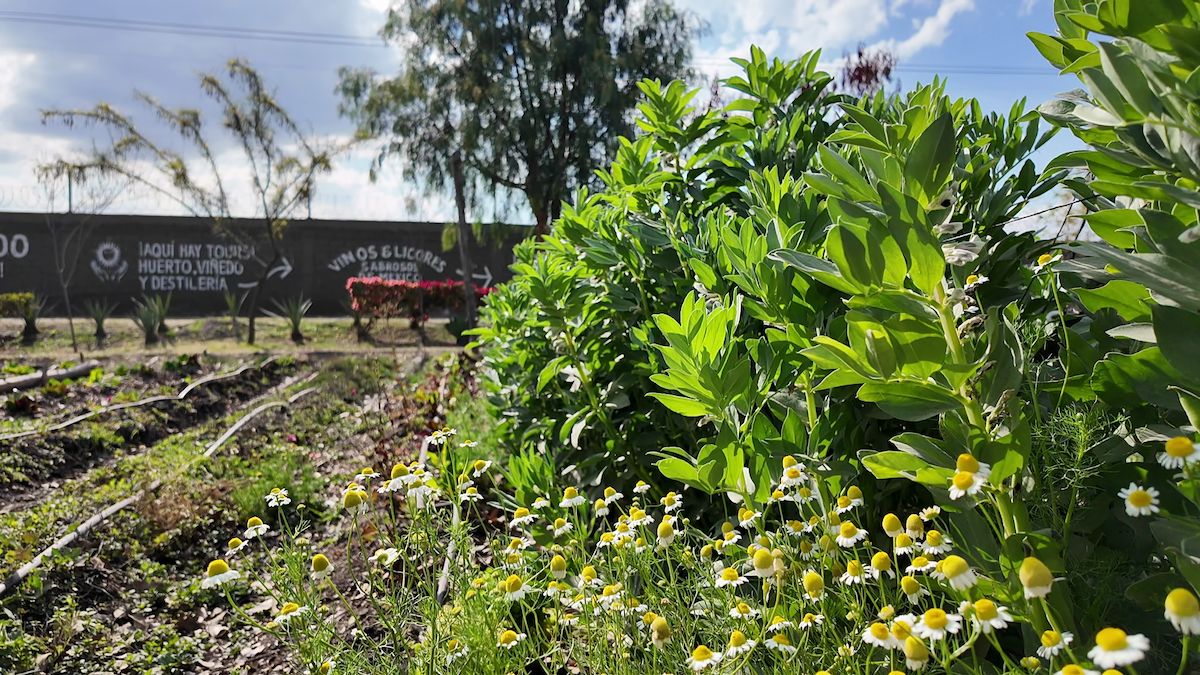
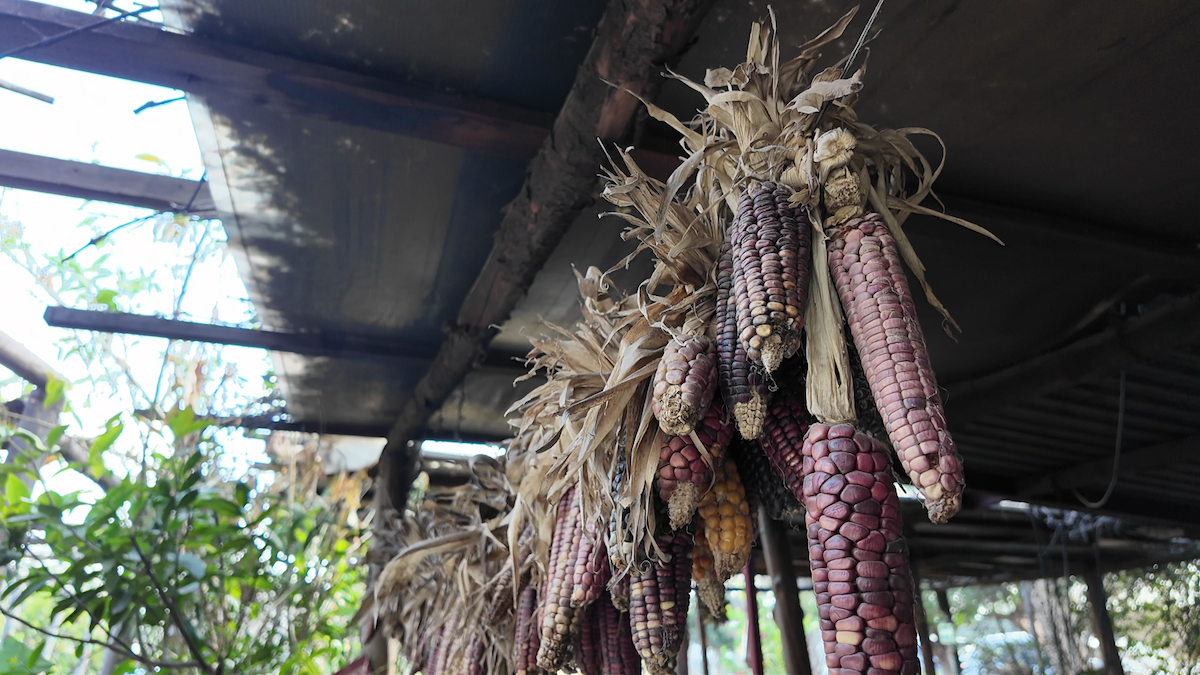
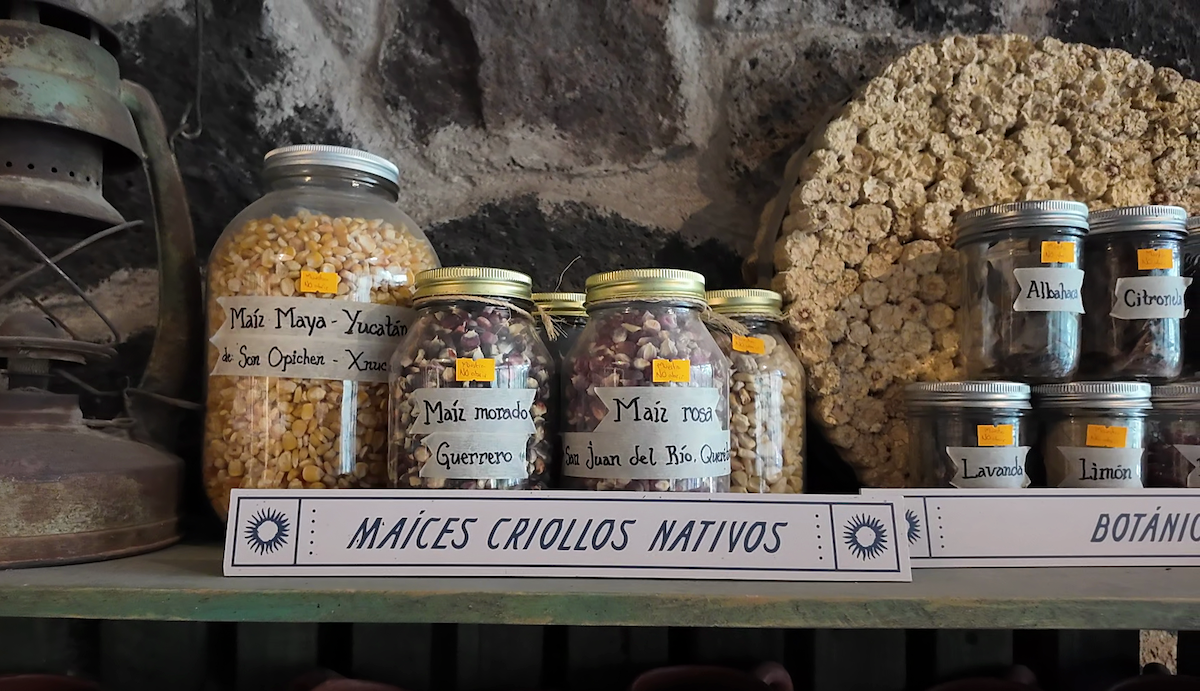
© 2025 Between Drinks
More from this episode
Mexican whiskey is about more than creating a great-tasting whiskey; it’s about preserving heirloom corn that is at risk of disappearing.
Transcript
Show Intro (0:00)
Welcome to Between Drinks, a podcast where we travel the world one drink at a time.
I’m your host, Caro Griffin, a mezcal sommelier, traveling bartender, and all-around drinks nerd.
In each episode, I’ll take you somewhere new to dive into a local drink with a story to tell. We’ll talk about its history and how it’s made, but also its connection to the place and the people that make it what it is.
There’s a great story behind every great drink, and I can’t wait to share them with you.
Thanks for listening!
Season Intro (00:24)
The first time I tried Mexican whiskey, I was spending a long weekend in Merida with a friend. I had lived in Mexico for a few years, but it was still early in my boozy journey.
We stumbled into a cute little bottleshop that had the usual agave spirits like tequila and mezcal, but they also had shelves full of other local spirits—Mexican whiskey, gin, rum, and even apéritifs.
Mexico is often reduced to just one or two things—tacos and tequila at best, cartels and violence at worst, but it’s so much more than that.
Now more than ever, it feels like the time to talk about how much more Mexico is—in the context of my own obsessions and expertise.
I’m your host, Caro Griffin. I love drinks of all kinds (and learning the stories behind them even more), but this category—Mexican spirits that aren’t made from agave… is one of my all-time favorites.
I often refer to this group as Mas Que Agave - or “more than agave.” Because, as much as I love my agave spirits, and I do love them, let’s be clear…
Mexico’s drinks are more than agave. They are cane, and beer, and coffee, and more types of ancestral corn than I could ever begin to name.
And, by the end of the season, I think you might just hear me when I say: everything is better in Mexico.
Episode Intro (01:35)
We’re starting the season with Mexican corn whiskey for a few reasons.
For one, I FUCKING LOVE IT.
For two, whiskey is one of the most well-known spirits. It’s been around for ages and has inspired legions of drink nerds to become truly obsessive about their collections.
And yet, I meet whisky nerds all over the world—including in Mexico—who’ve never heard of, much less tried, Mexican whiskey. And I think that’s a damn shame!
Finally, Mexico is literally the birthplace of corn. You cannot talk about Mexico in any sort of depth—its food, its history—without talking about corn.
And so, in my opinion, we can’t talk about this category of Mexican spirits without talking about Mexican corn whiskey.
History of Whiskey (02:20)
Whiskey is one of the best-known spirits, the world over.
People in the British Isles have been making it for over a thousand years, which is… pretty wild, when you think about it.
Immigrants from Scotland and Ireland brought it to North America in the 16 and 1700s… but the raw materials available on this side of the Atlantic were a bit different, and so whiskey’s ingredients changed, too.
Scottish and Irish whiskey is usually made from barley, but rye was more abundant in Pennsylvania, Maryland, and Virginia, so that’s primarily what those colonists used to make their whiskey.
And then, by the late 1700s, settlers had moved to what we now think of as “whiskey or bourbon country” in modern-day Kentucky and Tennessee. And they started using local corn.
Canada got into the game shortly after that, and then Japan a hundred years later.
And now there are more than 30 countries with active whiskey production. Yet, those five countries I mentioned—Ireland, Scotland, the US, Canada, and Japan— they are considered the core categories of whiskey.
Everything else is sometimes referred to as “world whiskey,” which, as a phrase…. It’s kind of like the term “world music” in that it feels we’re other-ing anything that’s not very focused on the mostly white, Western world…. But I digress!
Now that we’ve talked through the broad strokes of whiskey’s history, let’s go back to those settlers in the US who first started making corn whiskey in the late 18th century. Because that’s where corn whiskey, and bourbon specifically, really started.
Whiskey vs Bourbon (03:45)
Whiskey is a distilled alcoholic spirit made from grain.
The category is broad, and the legal definitions vary country to country, but at a high level, it’s all made the same way:
- Producers select grains like wheat, barley, rye, or corn.
- They mash, ferment, and distill those grains.
- And then they age the resulting liquid in barrels that give it color and flavor.
The exact grains and types of barrels often vary, and there are an infinite number of micro-decisions involved along the way that can affect the final result. (This is really what makes distilling both a science and an art in my opinion.)
Now, bourbon is a type of whiskey with a few extra requirements.
The main ones are that:
- The grain bill, which is what we call a particular whiskey’s exact recipe, has to be at least 51% corn. The rest can be barley, rye, and… insert other cereal grain here, but it’s got to be at least 51% corn.
- The liquid has to be aged in new, charred oak barrels. No other type of wood, no reusing the barrels when you’re done.
- And it has to be made in the US.
For our purposes, talking about Mexican corn whiskey, that last bit is the important part.
You could use the same mash bill, the same production process, the same everything… but if you’re in Kentucky or even California, it’s bourbon. If you’re outside of the US, you have to call it corn whiskey or just whiskey.
Corn whiskey isn’t super common outside of the US, but countries like Mexico, Japan, and India are fucking around and finding out. And I love to see it!
As someone who loves bourbon, I find Mexican corn whiskey particularly interesting. Not only because of Mexico’s long history with corn, but also because of how much more corn-forward it is.
Bourbon is typically made with 51% corn, and that corn is typically genetically modified and engineered specifically for bourbon.
Mexican corn whiskey is often 100% corn, or close to it, and it’s made with heirloom varieties of corn that are packed with flavor.
The Corn Connection (05:47)
Mexico is the birthplace of corn. Full stop, no competition.
The earliest evidence of domesticated corn was found in southern Mexico, in the state of Oaxaca, where it can be traced back 6,000 years.
6,000 years! And I thought it was hard to wrap my brain around a thousand years of whiskey making…
Now, when I say corn… I’m not talking about the standard, yellow, only-somewhat-flavorful-so-just-add-butter variety of corn that most of us eat today.
Native corn was—and still is—packed with flavor, found in every color of the rainbow, and has way more nutrients. So… why are we eating the “please-add-butter” variety?
Well, I’m sure you can guess: it’s those dollar dollar bills, y’all! [Cash register bell]
Genetically modified corn comes with higher yields and, thus, you can make more money growing it.
The trade-off is that the native corn still found in Mexico is now at risk of extinction.
As recently as March of 2025, Mexico’s president issued a constitutional amendment banning GMO corn from being planted in the country. The goal is to protect the 60-something native varieties that still exist in Mexico—and by extension, its cultural heritage, food sovereignty, and public health.
But GMO corn can still be imported, and so cross-contamination, and thus extinction, is still a big risk.
Enter some enterprising mezcaleros at stage left…
“They had a lot of corn. So, Jaime said, "If we make the best tortillas in the world, the best tamales, why don't we make the best whiskey?”
Juan del Campo (07:15)
That was Juan Miguel Anaya from Juan del Campo, one of my favorite whiskey brands. It’s made in central Mexico, right outside the city of Queretaro and just a few hours from my home in Mexico City.
I love Juan del Campo because their whiskey is fucking good, first and foremost, but also because its produced ethtically, in small batches, often using a single variety of native corn, or maiz criollo, as they call it.
This is really unique because most whiskey is made by blending different grains together. That’s how whiskey is made all over the world, so it’s totally normal to do that and yet… I think it’s really cool to try a whiskey that showcases a specific type of corn, especially when it’s as special as the corn being used in these whiskeys.
This is an element that’s unique to Mexican whiskey, specifically. So, if you take away one thing, that’s the thing to remember about what makes it different from other whiskeys - the corn is special, and they’re using way more of it than other whisky producers.
The flavor is less a product of the barrel and more about showcasing the corn.
(Don’t believe me? Try Juan del Campo’s black pozole whiskey, and thank me later.)
Juan: They are unique products that probably, if you don't taste it right now, like a red whiskey, with red corn from Chiapas… It's probably gonna be extinct and you’re never gonna have another bottle.
Caro: Yeah, you're never gonna try that corn again, unless you're at a fancy farm-to-table restaurant, maybe.
Juan: Exactly.
I got to visit Juan del Campo’s distillery earlier this year, and the thing that stuck with me is that the whole company is like one big milpa. It’s grown organically from mezcal to whiskey, and even on to wine and gin, the story of which I’m going to save for a future episode.
Their mezcal, which is sold under the name Gracias a Dios, or thanks to god, is made by Oscar Hernández, a fourth-generation mezcalero, who is not only the one making the mezcal, but is also an equal partner in the brand, which is unfortunately not common.
Hernandez grows the agave for his mezcal alongside corn and beans. This supports a healthy ecosystem and provides foodstuffs for his family and local community. It was also the inspiration for Juan del Campo’s whiskey.
Because, in their minds, if you’re already growing great corn, why not see if you can also make a great whiskey?
These days, the company sources corn from a number of different farmers all across the country.
Each one provides unique varieties of maiz criollo. These farmers are made financial partners in the business, just like Hernandez, and they have their name and photo included on the bottle, along with a slew of other interesting details that give you the full picture of what’s inside.
Caro: I love that you put that on the bottle.
Juan: It's a recognition for the people that work the land and they became… When they gave us the corn, they become partners. So they receive profit from the bottle sales.
Caro: Oh, that's amazing.
Juan: So, we’re not just like, give me the corn. Like, you're gonna be our partner. So, when you're drinking [other brands], you don't see shit, you don’t put a face to what you're gonna drink, where it came from, what it means.
In many ways, Juan del Campo’s story is the perfect example of why whiskey production makes so much sense in Mexico, and why I think it’s surprising that it’s such a new category.
Despite 6,000 years of corn cultivation and 3,000 years of mezcal production… no one really connected the two until 2013. There were some whiskey distillers along the border during US Prohibition… but that’s kind of it, as far as I can find.
This feels wild to me. Especially when you consider that indigenous communities across Mexico have been fermenting corn for drinks for a thousand years. Like, they were already doing the mashing, the fermenting… they just weren’t doing the distilling until twenty years ago.
There are still fewer than a dozen whiskey brands that are commercially available, and even then, production is small, and distribution is not widespread, especially outside of Mexico.
Most of the producers do have some mezcal connections—a lot of them started in mezcal, either as mezcaleros making their own spirit, or in/around the production and sale of it.
And, while they’re all fans of whiskey, and their whiskey in particular (lol), the thing that struck me the most during my interviews and research is that their businesses are all about more than making whiskey.
They’re about sharing these native corn varieties before they go extinct, giving people a chance to try it outside of a fancy restaurant, and celebrating Mexico’s connection to this incredible foodstuff.
This is a theme that will run through this whole season, and one that I hope shows you a different side of Mexico—a country that I love, that I now call home.
Where to Find It (11:55)
So, now that I’ve sold you on Mexican whiskey, let’s talk about where you can actually buy it.
This category is so new that, when doing some initial research for this episode, ChatGPT served me so many wrong answers that I eventually gave up and went on to do everything the old-fashioned way: googling my little heart out, going to all my favorite bottle shops in Mexico City, and sending DMs to every bartender and industry friend I have.
But, lucky for you, I did that leg work and have put together a big ol’ guide to Mexican Whiskey that you can find on my website, betweendrinks.co/mexicanwhiskey.
On that landing page, I list all the producers who have a commercially available product. Now, a lot of them are still hard to find, but this is thankfully changing!
Abasolo, another one of my favorite whiskeys from Mexico, is arguably the biggest of the bunch. Their distillery - the first in the country to be built specifically for whiskey production - is found not far from Mexico City.
They make a single style that’s paving the way for the category abroad, which is usually what it takes. One big, focused player that educates the consumer that this category of Mexican whiskey even exists, and opens the doors for everyone as a result.
I’m always so thrilled when I see a bottle of Abasolo behind the bar outside Mexico. And I’ve converted so many whiskey lovers in the US and Europe by making them try it neat or in an Old Fashioned! So, I encourage you to try the same.
Abasolo is currently available in the US, UK, Denmark, and Australia. So, if you live in one of those places, be sure to pick up a bottle. Or, try having a traveling friend grab it for you, if you don’t. I’ve been known to do that a few times. (Laughs)
Another brand that’s becoming easier to find is Sierra Norte, which is made in Oaxaca—that part of Mexico that I mentioned earlier that was the birthplace of corn. They’re another producer that makes whiskey from single varieties of native red, white, yellow, and even rainbow corn in Oaxaca, specifically.
So, if you’re a whiskey nerd like me, I highly recommend trying all their bottles side-by-side for a great example of how much impact these different corn varietals can have on the final flavor.
And, hey, no matter where you live, it never hurts to ask at your local liquor store. The more interest in this category, the better! And who knows, maybe they can order you a bottle!
Conclusion (14:05)
Well, that’s all for this episode, y’all.
I did a lot of research on whiskey, corn whiskey, and Mexico in general for this episode - so check out that link I mentioned for some more fun facts and outtakes, of sorts. That’s betweendrinks.co/mexicanwhiskey.
If you’re new to Between Drinks, I also want to share my newsletter, where I write about the overlap between travel, culture, and drinks.
It’s basically a mini version of this podcast. And it’s where I share a lot of the behind-the-scenes stuff that goes into these episodes—trips to distilleries, off-topic but interesting conversations with brewers and bartenders, and specific recommendations on where to get great drinks in cities around the world.
You can subscribe at betweendrinks.co/subscribe.
Thanks again for listening, and I hope to see you for the next episode as we dive further into other Mexican spirits!
Mexican Whiskey Brands
Mexican whiskey is a category that's been around for less than 20 years. It can be hard to tell which brands are still active, much less making it available in stores.
I've done my best to list every brand that's (1) actively producing whiskey in Mexico and (2) selling it somewhere.
If you know of a brand I'm missing, please let me know!
Where to Buy Mexican Whiskey
Disclaimer: I have no affiliation with the sinks I've linked below. Order at your own risk!
Mexico
- Abasolo — Widely available! Check your favorite liquor store.
- Cuatro Volcanes — Available online from the brand.
- Gran Maizal — Not available in Mexico yet.
- Juan del Campo — Available online from the brand and at specialty bottle shops.
- Ley Seca — Available online from a third-party, and usually at SOM in CDMX.
- Maíz Nation — Available online from the brand.
- Prieto y Prieta — Available at specialty bottle shops.
- Revés — Available online from the brand and at some specialty bottle shops.
- Sierra Norte — Available at specialty bottle shops.
United States
Keep in mind that distribution is fragmented due to state laws!
All the brands below are available somewhere, but not in every state.
- Abasolo — Widely available! Check your favorite liquor store.
- Cuatro Volcanes — Not available in the US.
- Gran Maizal — Their online store serves most states, and it's carried at select bottle shops/bars/restaurants in Texas and Washington, D.C.
- Juan del Campo — Not available in the US.
- Ley Seca — Limited availability; check specialty bottle shops.
- Maíz Nation — Available online from a third-party.
- Prieto y Prieta — Limited availability; check specialty bottle shops.
- Revés — Very limited availability; check specialty bottle shops.
- Sierra Norte — Available online from the brand.
Europe
- Abasolo — Available in the UK, France, Germany, and Italy
- Ley Seca — Available in Italy and Poland
- Maiz Nation – Available in France and Denmark.
- Sierra Norte — Available in the UK, Italy, and the Netherlands.
Everywhere Else
Sierra Norte is also available in Paraguay, China, Japan, and Australia.
It's distributed by a third party so the brand wasn't able to share a more detailed list. But keep an eye out if you live in one of those places!
Recs for your next trip
The following spots are great places in Mexico try local whiskey.
Bottle Shops in Mexico
Great liquor stores in Mexico where you can buy a bottle of Mexican whiskey to take home with you.
El Liquor Store (CDMX)
La Botillería (Merida)
Mezcalia (CDMX)
SOM (CDMX)
Cocktail Bars in Mexico City
Great bars in CDMX where you can try Mexican whiskey neat or in a cocktail. They all have a few brands on their backbar.
Chow Chow House (Juárez)
Rayo (Roma Norte)
SOM (Condesa)
